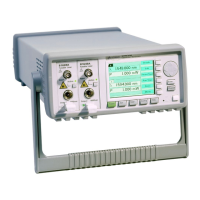180 8163A/B, 8164A/B, 8166A/B User’s Guide
7 Return Loss Measurement
How to Choose a Light Source
Highly accurate return loss measurement requires that you use a light
source with a subset of the following properties:
• low coherence length
•high power
• [and, for the 81534A, power stability.]
If a return loss module with at least one internal source (such as the
81611A, 81612A or 81613A) is not available, we recommend that you use
any of the following as part of your return loss measurement setup:
• Erbium ASE Source.
This source offers a high-power low-coherence output that is very
stable over time.
• Laser Source modules.
See Accessories on page 345 for a list of modules that can be installed
in your mainframe. Refer to the note below that explains the use of
highly coherent light sources.
• Tunable Lasers, when you want to measure Return Loss over a
wavelength range.
See Accessories on page 345 for a list of modules that can be installed
in your mainframe. Refer to the note below that explains the use of
highly coherent light sources.
• LED sources.
The intensity of the output of LED sources is very stable over time,
although the low power output of LEDs restricts the dynamic range of
return loss measurement.
If you use high-coherence light sources, you can improve performance
by:
• modulating the output signal at 2 kHz or higher, or
• using coherence control to reduce the coherence length of the signal.

